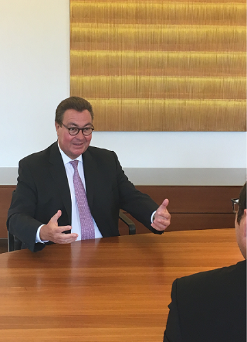Oliver Bäte is aggressively reorganizing the Allianz Group. Why?
When the world around you is changing, you must also change at the same pace or faster to avoid being left behind. What’s at stake is the future viability of our company. Taking a long-term perspective is in the interest of all stakeholders – customers, employees, sales partners, shareholders. We want to approach the necessary changes from a position of strength and not from a position of urgency because we waited too long. And we want to participate in the change, not be driven by it.
